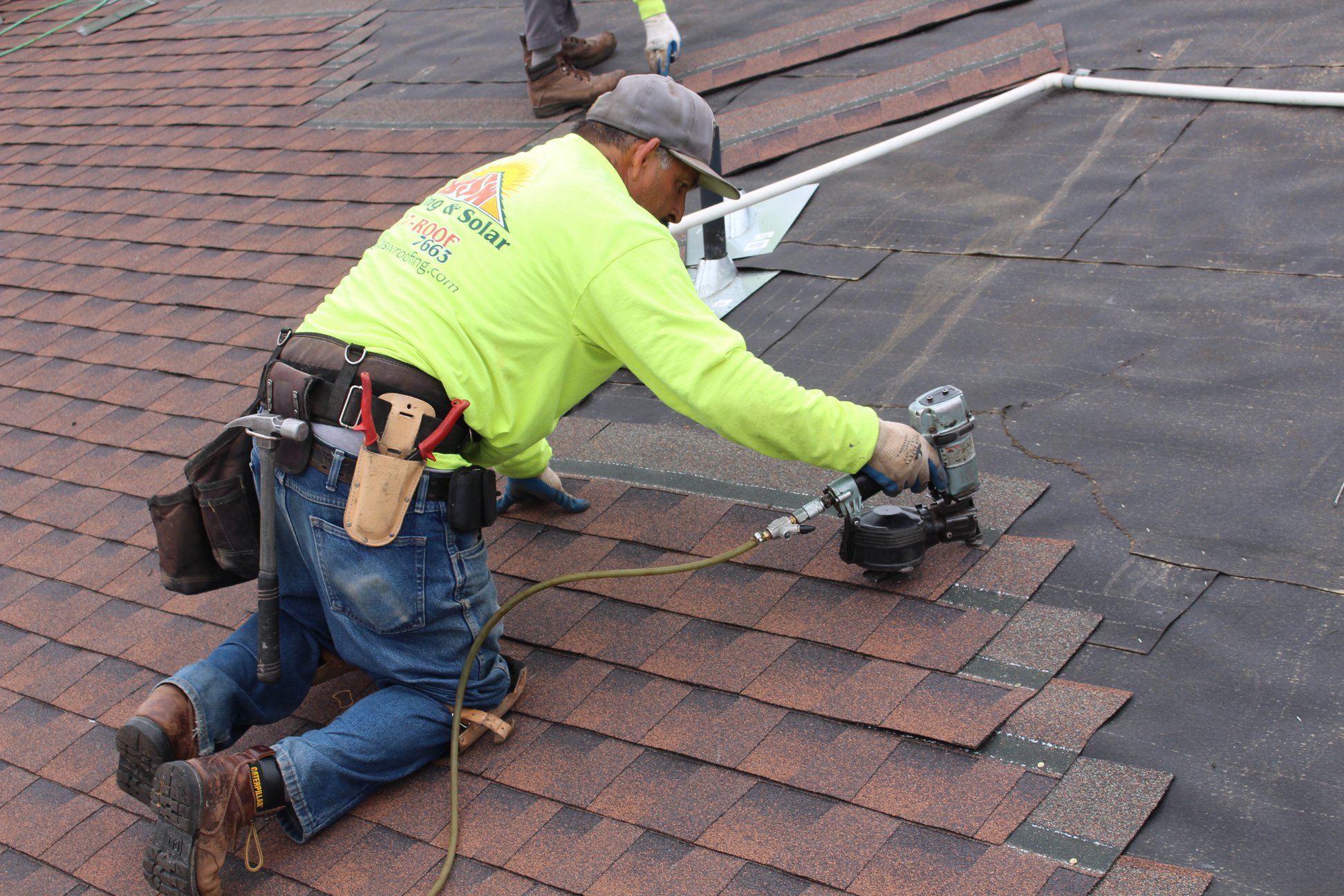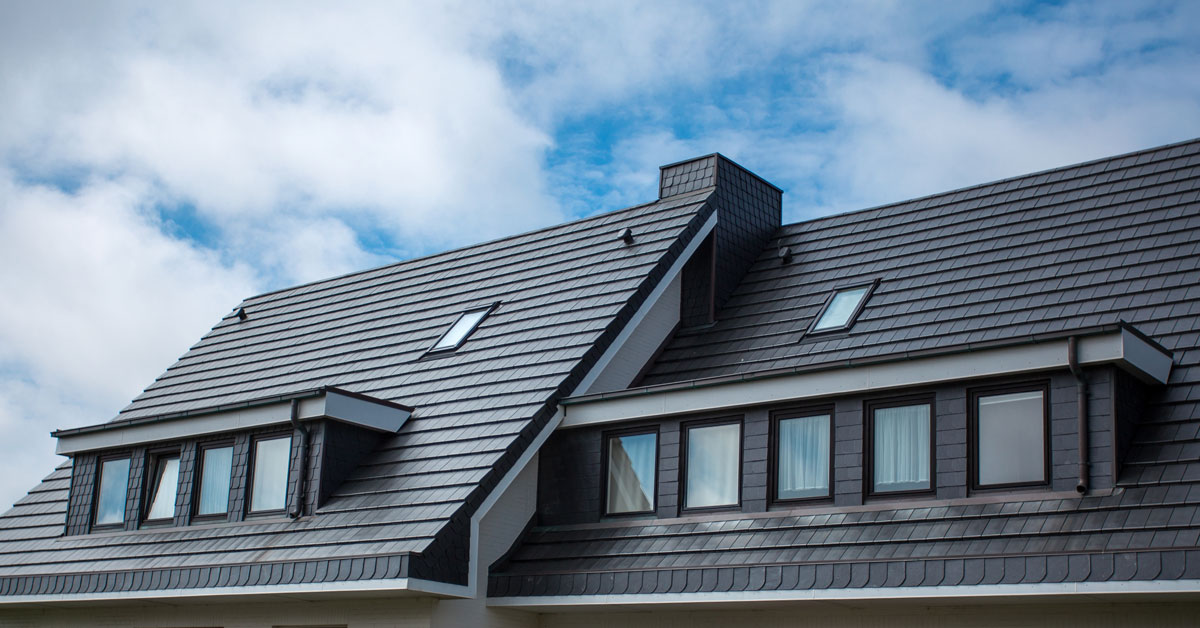Step-by-Step Guide to Finding the Right Roofing Companies in Gainesville
Step-by-Step Guide to Finding the Right Roofing Companies in Gainesville
Blog Article
Ideal Practices for Ensuring Appropriate Roofing Ventilation
A balanced consumption and exhaust vent proportion, typically 1:300, plays a crucial function, with consumption vents preferably placed at the reduced edge of the roofing system for amazing air entrance and exhaust vents at the top for cozy air departure. Keeping insulation away from vents is critical to protect against air flow constraint.
Understand Air Flow Essentials
Correctly comprehending ventilation fundamentals is important for making certain the durability and performance of roof. Reliable ventilation alleviates moisture accumulation and temperature extremes in the attic, both of which can cause considerable architectural damages over time. A well-ventilated roof helps in stopping usual issues such as mold development, wood rot, and ice dams, which can endanger the honesty of the roofing materials and the underlying frameworks.
The primary objective of ventilation is to facilitate the motion of air, permitting a constant exchange between the outdoor and interior environments. This equilibrium is accomplished through a combination of consumption and exhaust vents that collaborate to keep optimum air flow. Consumption vents, commonly situated along the eaves or soffits, permit fresh air to go into the attic room room, while exhaust vents, commonly positioned at or near the roofing system ridge, make it possible for hot, humid air to leave.
Secret variables affecting the performance of roofing system ventilation consist of proper positioning, sufficient sizing, and guaranteeing that both consumption and exhaust vents are unobstructed. Normal assessment and upkeep are essential to recognize possible obstructions, damage, or inefficiencies in the air flow system, thereby securing the roof's efficiency and toughness.
Kinds of Roof Covering Vents
Roofing vents play an essential role in maintaining reliable attic ventilation and, by expansion, the general health of the roof system. Numerous kinds of roofing system vents are offered, each with one-of-a-kind benefits customized to particular roof covering needs.

Soffit vents are installed under the eaves and job in tandem with roof vents to make certain a well balanced intake and exhaust system. By enabling cooler air to enter from below, soffit vents help with the expulsion of hot air via top vents. Gable vents, situated on the exterior wall surfaces of the attic, deal another reliable option, specifically in homes with gable roofing systems.
Evaluate Your Existing Ventilation

Following, think about the age and go now condition of your roofing materials and ventilation elements. Older systems may not follow present building regulations or might have degraded over time, minimizing their effectiveness. Conduct a thorough examination to recognize any kind of indicators of wear and tear, such as rust, damage, or gaps that can endanger the system's performance.
Additionally, determine the attic room temperature level and moisture degrees. Heats and moisture can indicate insufficient ventilation - gainesville fl roofing companies. Make use of a hygrometer and thermometer to obtain exact readings, comparing them with outdoor problems. Persistent discrepancies recommend prospective concerns that require dealing with.
Setup Best Practices
Efficient installation of roof air flow systems is extremely important for guaranteeing optimum performance and long life. Correct setup starts with comprehending the certain ventilation needs of the structure and the roofing system it covers. This involves calculating the appropriate proportion of intake to exhaust vents, usually adhering to the why not try these out 1:300 policy, which states one square foot of air flow for every 300 square feet of attic flooring area.

Consumption vents must be set up at the roofing system's lower side, usually in the soffits, to permit great air to go into. Exhaust vents, on the various other hand, should be mounted near or at the roofing system's height to help with the exit of warm, damp air.
Seal all vent connections diligently to protect against air leaks and prospective water seepage. a fantastic read Use high-grade products and adhere to maker guidelines to ensure durability and effectiveness. Furthermore, integrating ridge vents with baffles can substantially boost air flow effectiveness by avoiding wind-driven rain and snow from going into the attic.
Inevitably, accurate installation of roof air flow systems reduces possible problems such as mold development, ice dams, and architectural damages, making sure the roof's integrity and the building's total health and wellness.
Regular Maintenance Tips
Uniformity in maintenance techniques is essential to making certain the long-term performance of roofing air flow systems. Throughout these evaluations, guarantee that vents are free of debris, nests, and other obstructions that can restrain airflow.
Use a soft brush or a vacuum to remove dust and debris from consumption and exhaust vents. Be mindful not to damage the vent screens or louvers during the procedure.
Appropriate insulation is equally vital. Make sure that attic insulation does not block the vents, as this can severely restrict air flow. If any kind of insulation has moved or resolved, reposition or change it to preserve an efficient obstacle.
Finally, replace any kind of damaged or missing elements immediately. Broken vents, cracked roof shingles, or deteriorated flashing can all contribute to inadequate ventilation and should be attended to immediately. Routine maintenance makes certain that the roofing air flow system operates efficiently, therefore extending the lifespan of the roofing itself.
Verdict
Ensuring correct roofing air flow is critical for maintaining the effectiveness and durability of a roof. Adherence to the 1:300 consumption and exhaust air vent proportion, paired with the critical positioning of vents, is necessary. Normal biannual evaluations, particles cleansing, and making certain insulation does not obstruct air flow are vital practices. Executing these best methods will promote a well-ventilated roof, thus reducing possible problems connected to moisture build-up and too much warm, ultimately extending the roof's life expectancy.
A well balanced consumption and exhaust vent proportion, typically 1:300, plays a pivotal role, with intake vents preferably placed at the lower edge of the roofing for amazing air entrance and exhaust vents at the peak for warm air departure. Intake vents, usually situated along the eaves or soffits, enable fresh air to enter the attic area, while exhaust vents, commonly located at or near the roof ridge, make it possible for warm, humid air to run away.
Soffit vents are set up under the eaves and job in tandem with roofing system vents to guarantee a balanced intake and exhaust system. By enabling cooler air to get in from below, soffit vents promote the expulsion of warm air via upper vents. Adherence to the 1:300 intake and exhaust vent ratio, combined with the tactical placement of vents, is essential.
Report this page